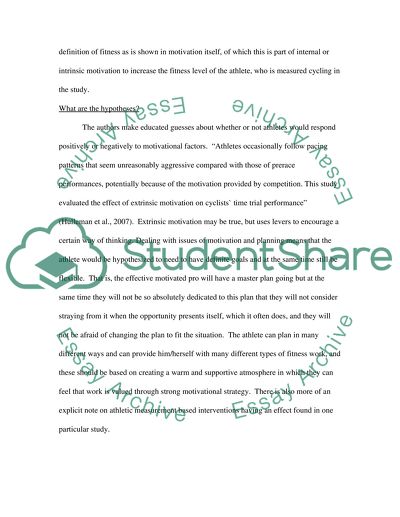Cite this document
(Analysis of the Effect of Extrinsic Motivation on Cycle Time Trial Assignment, n.d.)
Analysis of the Effect of Extrinsic Motivation on Cycle Time Trial Assignment. Retrieved from https://studentshare.org/sports-and-recreation/1572086-research-design-assignment
Analysis of the Effect of Extrinsic Motivation on Cycle Time Trial Assignment. Retrieved from https://studentshare.org/sports-and-recreation/1572086-research-design-assignment
(Analysis of the Effect of Extrinsic Motivation on Cycle Time Trial Assignment)
Analysis of the Effect of Extrinsic Motivation on Cycle Time Trial Assignment. https://studentshare.org/sports-and-recreation/1572086-research-design-assignment.
Analysis of the Effect of Extrinsic Motivation on Cycle Time Trial Assignment. https://studentshare.org/sports-and-recreation/1572086-research-design-assignment.
“Analysis of the Effect of Extrinsic Motivation on Cycle Time Trial Assignment”, n.d. https://studentshare.org/sports-and-recreation/1572086-research-design-assignment.


